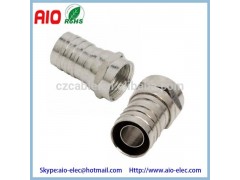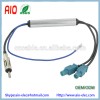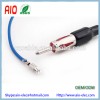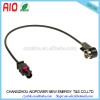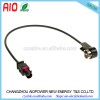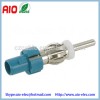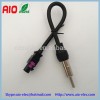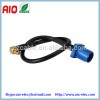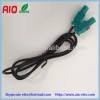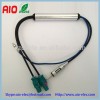| 原産地: | 中国(本土) | 適用: | RF | 銘柄: | aio | モデル番号: | Aio-t044 | タイプ: | F | 性: | 男性 | 名: | Fタイプのモジュラーコネクタ圧着オス両端rg6用/uケーブル | コンタクト製造: | oemおよびodmサービスが提供される | ボディ: | 真鍮やミニコミ | 絶縁体: | abs | ソケットコンタクト: | Beyllium- 銅 | メッキ: | ニッケル | O- リングシール: | 6146シリコーンゴム | インピーダンス: | 75Ω | 動作電圧: | 170vr。 m。 sst海面 | 周波数範囲: | Dc~1ghz |
包装
| 包装: | ビニール袋は、 インナーとしてパッキング、、 段ボール箱のように外側の包装、 またはお客様によると、 |
仕様
| F Type Modular Crimp Ends Connectors for RG6/U Coax Coaxial Cable | |
| |
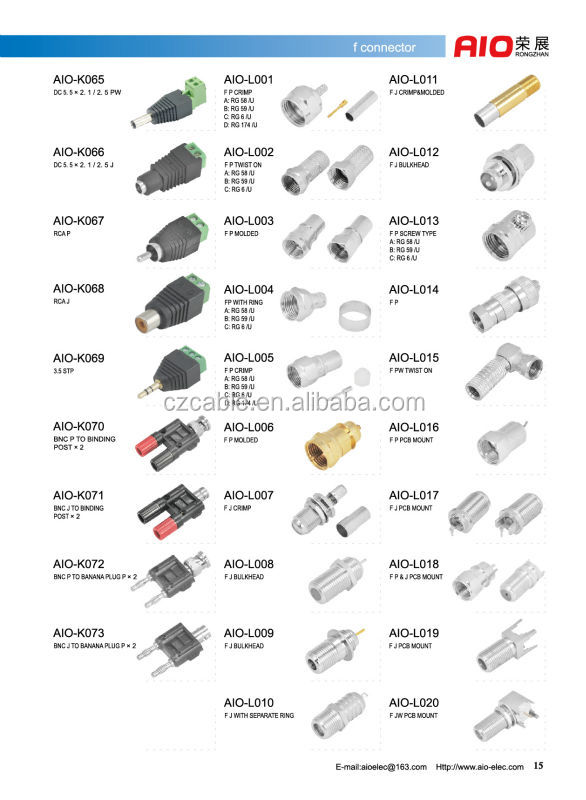
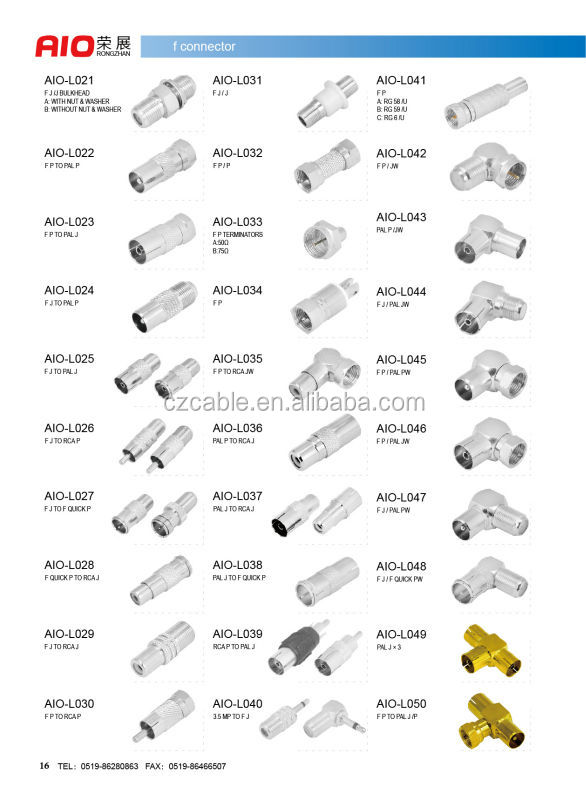
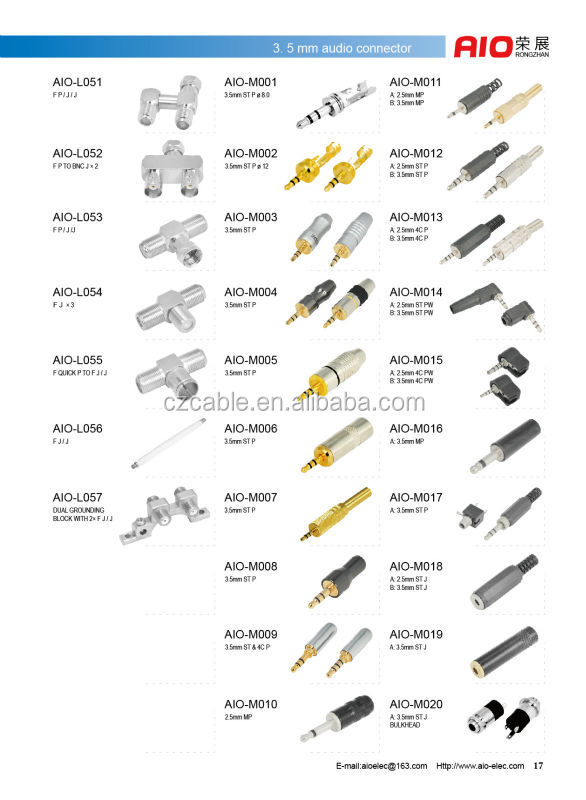
 Product Description
Product DescriptionThe F connector is a coaxial RF connector commonly used for "over the air" terrestrial television, cable television and universally for satellite television and cable modems, usually with RG-6/U cable or, in older installations, with RG-59/U cable. It was invented by Eric E. Winston in the early 1950s while working for Jerrold Electronics on their development of cable television. In the 1970s it became commonplace on VHF television antenna connections, as coaxial cables replaced twin-lead, and later for UHF also.
The F connector is inexpensive, yet has good 75 Ω impedance match up to 1 GHz and has usable bandwidth up to several GHz. One reason for its low cost is that it uses the solid conductor (center wire) of the specified types of coaxial cable as the pin of the male connector. This design is subject to the surface properties of the inner conductor (which must be solid wire) and is not corrosion resistant; hence waterproof versions are needed for outside use (for example, on aerials). Corrosion resistance can be improved by coating all bare copper wires with silicone grease. The male connector body is typically crimped, or sometimes screwed, on to the exposed outer braid. The cable industry standard now is to use compression fittings. Female connectors have a 3/8-32 UNEF thread (9.525mm diameter). Most male connectors have a matching threaded connecting ring, though push-on versions are also available. Push-on F connector ends provide poor shielding against airborne signals (e.g., a nearby TV, Radio, Cell Phone, Cordless Phone, Government radiolocation on 54 - 1002 MHz band transmitters and will interfere with a CATV station).
It is suitable for domestic terrestrial, cable, and satellite TV installations and offers significant improvements over the Belling-Lee connector(IEC 169-2) used on European terrestrial receivers. It requires slightly more care to properly install the male connector to the cable than with Belling-Lee type and attention should always be paid to the quality of the connector and matching with the cable size.

